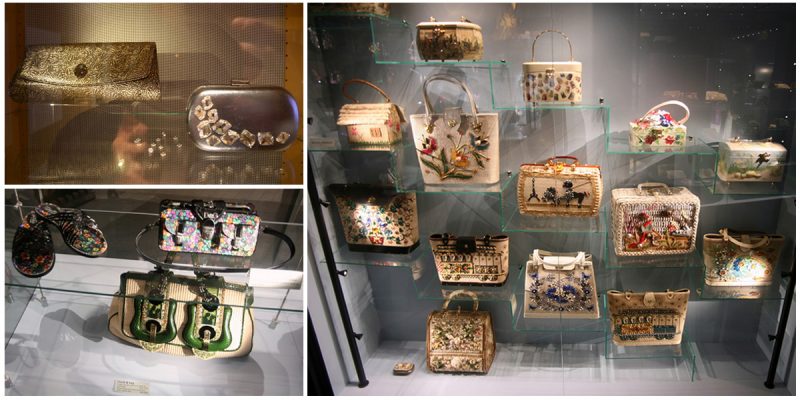Although fashion is not just about clothing, as there are changing styles in furniture, automobiles, gardening, and all sorts of things, admittedly one thinks first about matters sartorial when the word fashion is said. Perceived as frivolous by some, style of dress is quite serious to others. As Edith Head said, “You can have anything you want, if you dress for it.”
Accessories– jewelry, handbags, hats, belts, scarves, watches, sunglasses, and so on–are made to give a final touch to any look. When it comes to the handbag, its historical evolution and importance has been lavishly displayed in the largest museum of bags in the world, and the only one in Europe–the Tassen Museum of Bags and Purses in Amsterdam, Netherlands.
This unique museum presents the history of the bag in Western culture from the Middle Ages to the present. The grandiose collection of more than 5,000 bags, purses, pouches, suitcases, et cetera reflects the cultural history of the bag for centuries. Among the iconic bags on display are ones belonging to Margaret Thatcher and Madonna. The exhibit on display in December 2017 is “Legendary Trunks,” with hundreds of authentic Louis Vuitton trunks and other items dating back as far as the 1850s.
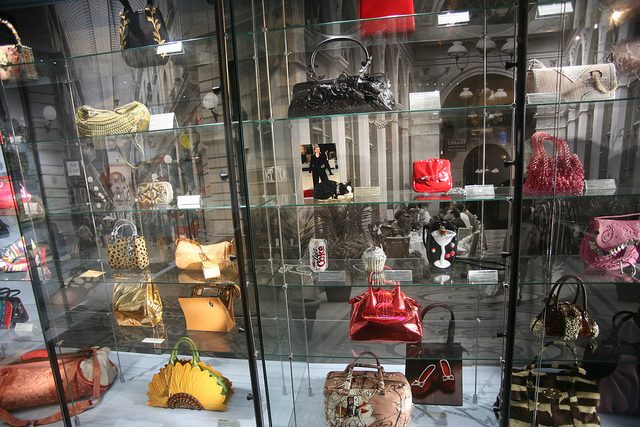
Like a number of other museums, the Museum of Bags and Purses was born from the passion of a private collector. Before establishing an authentic collection, Hendrikje and Heinz Ivo acquired many bags and purses in a period of over 30 years. They both describe their passion as a fascination for handbags and all of their elements: history, materials, techniques, and craftsmanship. Consequently, the collectors developed a full-scale museum of carefully selected, fine-quality items that illustrates the rich history of the bag in Western culture.

The museum is situated in a 17th-century canal house that is part of the UNESCO World Heritage Canal Ring Area of Amsterdam. Under its roof, visitors can find one-time historical exemplars as well as timeless classics, designed and produced by famous brands and contemporary designers. The canal house’s exterior and interior have been kept in their original state, separated in two floors with elegant and recently restored period rooms–the Small and the Large period room, both containing artworks from the 17th and 18th century. These rooms are also conceptualized venues for high tea events which can be visited by two people or large groups. Considering the vintage splendor of the interior, the museum’s website presents the rooms as modern facilities that can be booked for all sorts of events and occasions.
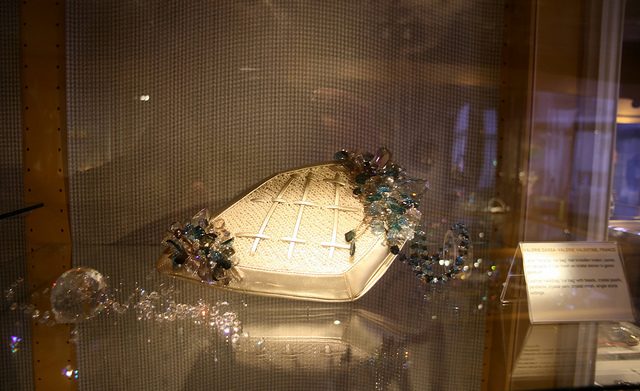
The extensive permanent collection has three sections containing masterpiece bags that can be observed as historic and cultural statements, each telling an individual story through its material, shape, design, and quality. The bags illustrate the mainstream customs of the days gone by, and also the process of female emancipation, significant art movements, techniques of design, as well as the actual technological and economic developments. The internationally praised collection displays handbags and purses from 1500-1800 which present bags from the earliest stages of civilization (bags with clasps, leather pouches and purses with long drawstrings), models of chatelaine purses from the 16th century, and thigh pockets.
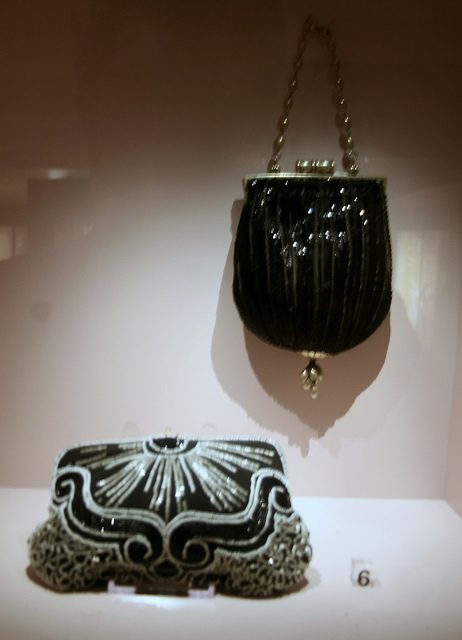
The section named A New Era, New Bags includes bags from 1800-1900, embodying the Classicism at the time through the model of the reticule–the first true handbag, carried on a cord or chain–moving forward to the period of Industrialization in which the hand luggage for railway travel set the standards for today’s handbags. The final section, named Present: The Handbag, introduces visitors to bag models from 1900, highlighting women’s emancipation as the crucial factor for the shaping of the handbag.
This section is characterized by mobility, practicality, and branding, evident in the leather document cases for going to the office, practical leather bags, and the elegant clutches for special occasions and events. All these samples include a designer signature from the most eminent handbag designers such as Prada, Versace, Gucci, Yves Saint Laurent, Hermès, Chanel, or Dior. Overall, the most distinguishable models from the sections, titled the “Masterpieces,” include a 16th century goat leather belt pouch from France, with an iron frame and 18 pockets; a beaded coin purse showing the arrival of the first giraffe in France, 1827; a leather clutch in the shape of cruise ship Normandie, France, 1935; and even the popular evening bag by Gianni Versace Couture, Italy, 1997 which was worn by Madonna at the 1997 premiere of the film Evita.
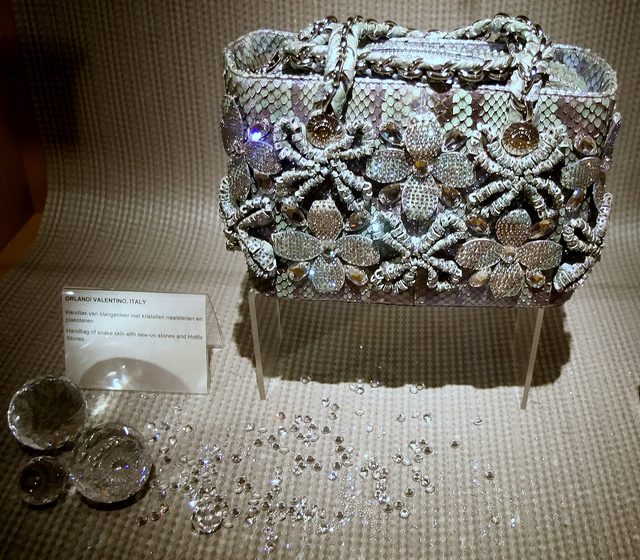
Today’s handbag has developed into a significant accessory designed by popular fashion designers. The most popular all-time classics are the Chanel bag with golden chain, and Hermès “Kelly Bag” and the “Birkin.”
Apart from the permanent collection, the museum organizes regular thematic exhibitions which present the museum’s most outstanding features or items on loan from other museums and private collections.
